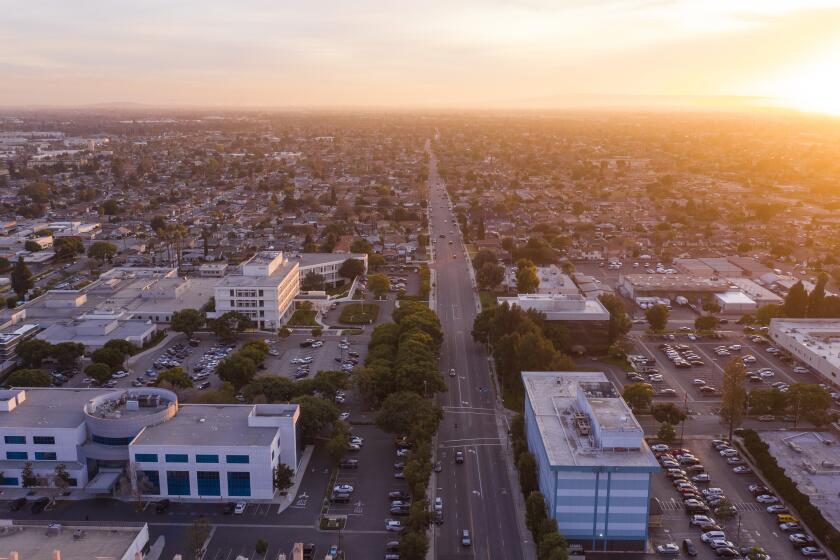Tar Pit Yields Record Number of Fossils : Paleontology: A large piece of a clamshell was among this season’s most interesting finds. Scientists are puzzled over how it got there.
- Share via
HANCOCK PARK — Pit 91, the only one of the La Brea tar pits still being excavated, yielded 1,117 specimens this summer.
That is a record for the annual summer dig in Hancock Park, according to Christopher Shaw, collection manager at the George C. Page Museum of La Brea Discoveries and coordinator of the project.
Last summer, volunteer excavators pulled 1,100 fossils from Pit 91.
When the tar pits--actually asphalt deposits--were first excavated from 1913 to 1915, scientists were especially interested in the fossilized remains of large birds and mammals, such as the saber-toothed cat. In recent decades, the tar pits’ paleontologists have also carefully excavated and preserved microfossils, including insects and pollen.
Among this season’s most interesting finds, Shaw said, was a fragment of a large clamshell. The specimen has since been identified as the shell of a pismo clam. Shaw pointed out that marine fossils are rarely found at the 14-foot level in Pit 91. “It’s a marine thing, and we’re dealing with terrestrial deposits,” he said.
“We don’t know whether it was brought in by humans or by streams from the slopes of the Santa Monica Mountains,” Shaw said of the fossilized shell.
He explained that Indians who once lived in the area used clamshells as scoops and as purses to carry asphalt. They had many uses for the asphalt, he said, including attaching abalone fishhooks to sinew fishing lines. Asphalt also was used to glue ornaments onto pots and baskets.
If the shell was used by humans, it probably dates 9,000 years, he said. If it was carried in by water without human help, it could be as old as 25 million years, he said.
The summer dig yielded 626 vertebrate remains, most of them from mammals, Shaw said. Among the finds were two bones from the relatively rare short-faced bear ( Arctodus simus ). He said the extinct, short-faced bear was the largest carnivore, by weight, in North America. One-third larger than a grizzly bear, it had long legs and a short, cat-shaped face. “It’s an extinct relative of the South American spectacled bear,” he said.
Pit 91 has yielded more than 80,000 specimens since 1969.
Since 1984, the pit has been excavated for two months each summer. It is the only such dig open to the public in any major city in the United States. Visitors can watch from an observation area at ground level as trained volunteers painstakingly remove asphalt from fossils 14 feet below.
Twenty volunteers spent 921 hours on the project this summer, supervised by senior excavator Trudy Stubbs.
Shaw said excavation will continue next summer, slightly west of this year’s activity and “deeper into bone-bearing sediment.”
“We should be finding lots of stuff next year, if there is a next year,” said Shaw, alluding to an unresolved budget crisis that could result in the reduction of Page Museum staff and programs.
More to Read
Sign up for Essential California
The most important California stories and recommendations in your inbox every morning.
You may occasionally receive promotional content from the Los Angeles Times.













